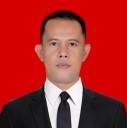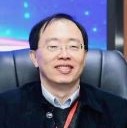Implementation of the Silungkang Songket Development Program with Natural Dyeing by the Koperindag Department in Sawahlunto City
DOI:
https://doi.org/10.69989/vca5x773Keywords:
Implementation, Program, Development, Songket SilungkangAbstract
The aim of the research is to find out an overview of the implementation of the Silungkang songket development program with natural dyeing by the Koperindag Department in Sawahlunto City. The importance of implementation is to understand the implementation of the Silungkang songket development program policy with natural dyeing by the Cooperative Industry and Trade Service in Sawahlunto City, namely the synergy between UKM actors and the Sawahlunto City Government, which acts as a regulator and facilitator in empowering songket craftsmen so that they are able to increase the ability of Silungkang songket craftsmen with natural dyeing. The research method uses a qualitative-descriptive approach, with the type of data collection carried out through interviews with the Head of the Sawahlunto City Cooperative Industry and Trade Service, the Head of the Sawahlunto City Bappeda, the Sawahlunto City Cooperative Industry and Trade Head, Sawahlunto City IKM TPL, Silungkang songket craftsmen with natural dyeing, and the community around the central area. The research results show why the implementation of the Silungkang Songket Development Program with Natural Dyeing by the Koperindag Department in Sawahlunto City has not been optimal due to the lack of clarity in the SOP, limited human resources, inadequate supporting facilities and infrastructure, access to capital sources that is still limited, the absence of UPT and third parties for business development, and socialization and coordination that are not yet massive.
Downloads
References
Abbas, K., & Shirazi, N. (2015). The key players’ perception on the role of Islamic microfinance in poverty alleviation: The case of Pakistan. Journal of Islamic Accounting and Business Research, 6(2), 244–267. https://doi.org/10.1108/JIABR-06-2013-0017
Antlöv, H., Wetterberg, A., & Dharmawan, L. (2016). Village governance, community life, and the 2014 village law in Indonesia. Bulletin of Indonesian Economic Studies, 52(2), 161–183. https://doi.org/10.1080/00074918.2015.1129047
Appelbaum, D., Kogan, A., Vasarhelyi, M., & Yan, Z. (2017). Impact of business analytics and enterprise systems on managerial accounting. International Journal of Accounting Information Systems, 25, 29–44. https://doi.org/10.1016/j.accinf.2017.03.003
Arikunto, S. (2019). Prosedur penelitian suatu pendekatan praktik.
Choy Chong, S., Salleh, K., Noh Syed Ahmad, S., & Syed Omar Sharifuddin, S. (2011). KM implementation in a public sector accounting organization: an empirical investigation. Journal of Knowledge Management, 15(3), 497–512. https://doi.org/10.1108/13673271111137457
Dayton, E., & Henriksen, K. (2007). Communication failure: basic components, contributing factors, and the call for structure. The Joint Commission Journal on Quality and Patient Safety, 33(1), 34–47. https://doi.org/10.1016/S1553-7250(07)33005-5
Dolowitz, D. P., & Marsh, D. (2000). Learning from abroad: The role of policy transfer in contemporary policy‐making. Governance, 13(1), 5–23. https://doi.org/10.1111/0952-1895.00121
Duncan, C. R. (2007). Mixed outcomes: The impact of regional autonomy and decentralization on indigenous ethnic minorities in Indonesia. Development and Change, 38(4), 711–733. https://doi.org/10.1111/j.1467-7660.2007.00430.x
Edward, A. V., & Frinaldi, A. (2023). Implementation of Propemperda Policy in the Bukittinggi City DPRD Environment. Adabi : Journal of Public Administration and Business, 10(2), 24–31. https://doi.org/10.62066/jpab.v10i2.3
Elza, D. S. (2012). Gambaran Tingkat Resiko Ergonomi dan Keluhan Subjektif MSD’s pada Pengrajin Songket Tradisional Silungkung Sumatra Barat. Depok. Universitas Indonesia.
Erdogan, A. I. (2018). Factors affecting SME access to bank financing: an interview study with Turkish bankers. Small Enterprise Research, 25(1), 23–35. https://doi.org/10.1080/13215906.2018.1428911
Fernandez, S., & Rainey, H. G. (2017). Managing successful organizational change in the public sector. In Debating public administration (pp. 7–26). Routledge.
Hák, T., Janoušková, S., & Moldan, B. (2016). Sustainable Development Goals: A need for relevant indicators. Ecological Indicators, 60, 565–573. https://doi.org/10.1016/j.ecolind.2015.08.003
Hedborg Bengtsson, S., Karrbom Gustavsson, T., & Eriksson, P. E. (2018). Users’ influence on inter-organizational innovation: mapping the receptive context. Construction Innovation, 18(4), 488–504. https://doi.org/10.1108/CI-12-2017-0095
Kerlin, R., Bolon, B., Burkhardt, J., Francke, S., Greaves, P., Meador, V., & Popp, J. (2016). Scientific and regulatory policy committee: recommended (“best”) practices for determining, communicating, and using adverse effect data from nonclinical studies. Toxicologic Pathology, 44(2), 147–162. https://doi.org/10.1177/0192623315623265
Li, S., Wang, K., Huo, B., Zhao, X., & Cui, X. (2022). The impact of cross-functional coordination on customer coordination and operational performance: an information processing view. Industrial Management & Data Systems, 122(1), 167–193. https://doi.org/10.1108/IMDS-04-2021-0265
May, T., Harris, S., & Collins, M. (2013). Implementing community sport policy: Understanding the variety of voluntary club types and their attitudes to policy. International Journal of Sport Policy and Politics, 5(3), 397–419. https://doi.org/10.1080/19406940.2012.735688
Moleong, L. J. (2016). Metodologi penelitian kualitatif. Remaja Rosdakarya.
Mulia, R. A., & Saputra, N. (2020). Analisis Faktor-Faktor Yang Mempengaruhi Kesejahteraan Masyarakat Kota Padang. Jurnal El-Riyasah, 11(1), 67–83. https://doi.org/10.24014/jel.v11i1.10069
Nesshöver, C., Assmuth, T., Irvine, K. N., Rusch, G. M., Waylen, K. A., Delbaere, B., Haase, D., Jones-Walters, L., Keune, H., & Kovacs, E. (2017). The science, policy and practice of nature-based solutions: An interdisciplinary perspective. Science of the Total Environment, 579, 1215–1227. https://doi.org/10.1016/j.scitotenv.2016.11.106
Peckham, S., Hudson, B., Hunter, D., & Redgate, S. (2022). Policy success: What is the role of implementation support programmes? Social Policy & Administration, 56(3), 378–393. https://doi.org/10.1111/spol.12771
Ran, R. (2017). Perverse incentive structure and policy implementation gap in China’s local environmental politics. In Local Environmental Politics in China (pp. 15–37). Routledge.
Schminke, M., Cropanzano, R., & Rupp, D. E. (2002). Organization structure and fairness perceptions: The moderating effects of organizational level. Organizational Behavior and Human Decision Processes, 89(1), 881–905. https://doi.org/10.1016/S0749-5978(02)00034-1
Shet, S. V, Poddar, T., Samuel, F. W., & Dwivedi, Y. K. (2021). Examining the determinants of successful adoption of data analytics in human resource management–A framework for implications. Journal of Business Research, 131, 311–326. https://doi.org/10.1016/j.jbusres.2021.03.054
Smith, K. B., & Larimer, C. (2018). The public policy theory primer. Routledge.
Sugiyono. (2018). Metode penelitian kuantitatif, kualitatif, dan R&D (edisi 2). Alfabeta.
Tracy, S. J. (2019). Qualitative research methods: Collecting evidence, crafting analysis, communicating impact. John Wiley & Sons.
Vedung, E. (2017). Public policy and program evaluation. books.google.com.
Verger, A. (2012). Framing and selling global education policy: the promotion of public–private partnerships for education in low-income contexts. Journal of Education Policy, 27(1), 109–130. https://doi.org/10.1080/02680939.2011.623242
Wade, R. (2010). After the Crisis: industrial policy and the developmental state in low‐income countries. Global Policy, 1(2), 150–161. https://doi.org/10.1111/j.1758-5899.2010.00036.x
Yousef, A. M. F., & Khatiry, A. R. (2023). Cognitive versus behavioral learning analytics dashboards for supporting learner’s awareness, reflection, and learning process. Interactive Learning Environments, 31(9), 5460–5476. https://doi.org/10.1080/10494820.2021.2009881
Zhan, J. V., & Qin, S. (2017). The art of political ambiguity: top–down intergovernmental information asymmetry in China. Journal of Chinese Governance, 2(2), 149–168. https://doi.org/10.1080/23812346.2016.1277507
Downloads
Published
Issue
Section
License
Copyright (c) 2023 Nazirwan Nazirwan, Krismena Tovalini, Surya Andini (Author)

This work is licensed under a Creative Commons Attribution-ShareAlike 4.0 International License.
Copyright Notice
An author who publishes in the journal "Jurnal Ilmiah Ekotrans & Erudisi" agrees to the following terms:
Author retains the copyright and grants the journal the right of first publication of the work simultaneously licensed under the Creative Commons Attribution-ShareAlike 4.0 License that allows others to share the work with an acknowledgement of the work's authorship and initial publication in this journal
Author is able to enter into separate, additional contractual arrangements for the non-exclusive distribution of the journal's published version of the work (e.g., post it to an institutional repository or publish it in a book) with the acknowledgement of its initial publication in this journal.
Author is permitted and encouraged to post his/her work online (e.g., in institutional repositories or on their website) prior to and during the submission process, as it can lead to productive exchanges, as well as earlier and greater citation of the published work (See The Effect of Open Access).
All materials in this site are protected by the law. It is prohibited to quote a part of or all of this website contents for commercial purposes without the permission or consent of the editors.
If anyone finds one article or more in this journal violate or potentially violate one’s copyrights, please report to us through e-mail of Principle Contact.
Legal-formal aspects of accessing any information and manuscript in this journal website refer to the provision of license Creative Commons Attribution-Share Alike (CC BY-SA). Read more about the Creative Commons Attribution-ShareAlike 4.0 Licence here: https://creativecommons.org/licenses/by-sa/4.0/.
All information available in 'Jurnal Ilmiah Ekotrans & Erudisi' is academic in nature. 'Jurnal Ilmiah Ekotrans & Erudisi' is not responsible for loss due to the abuse of information in the website.
Information
Notice about change in the copyright policy of the journal 'Jurnal Ilmiah Ekotrans & Erudisi' : "From Volume 1, Nomor 1 onwards the copyright of the article published in the journal 'Jurnal Ilmiah Ekotrans & Erudisi' will be retained by the author"
Privacy Statement
The names and email addresses entered in this journal site will be used exclusively for the stated purposes of this journal and will not be made available for any other purpose or to any other party.




































